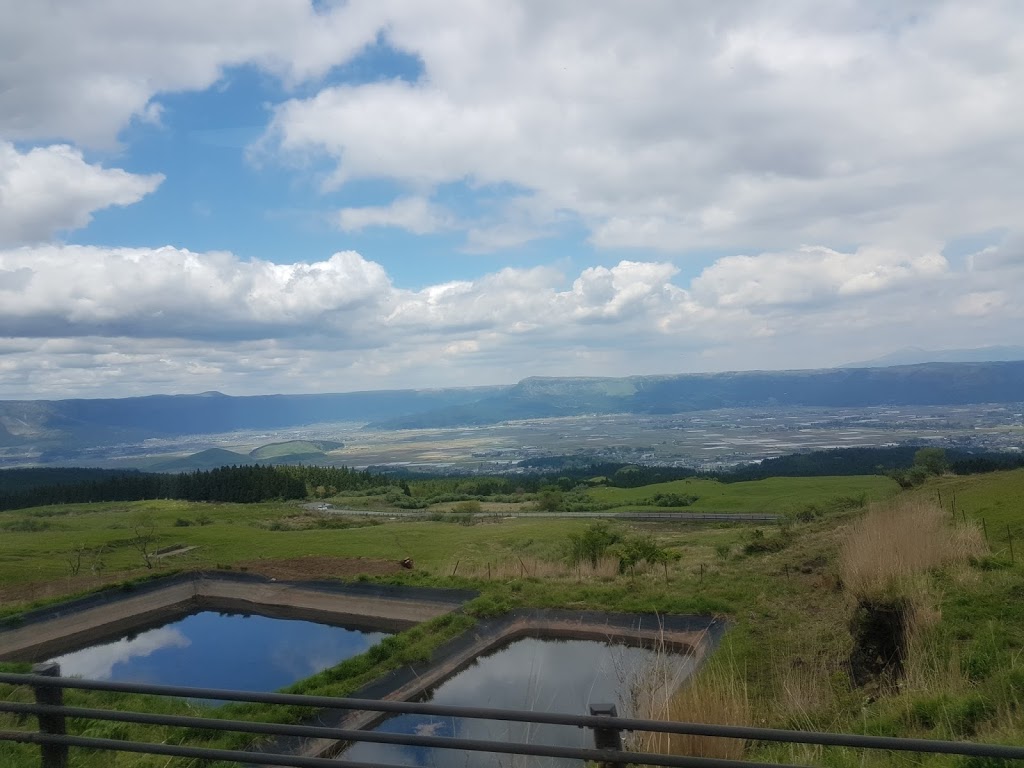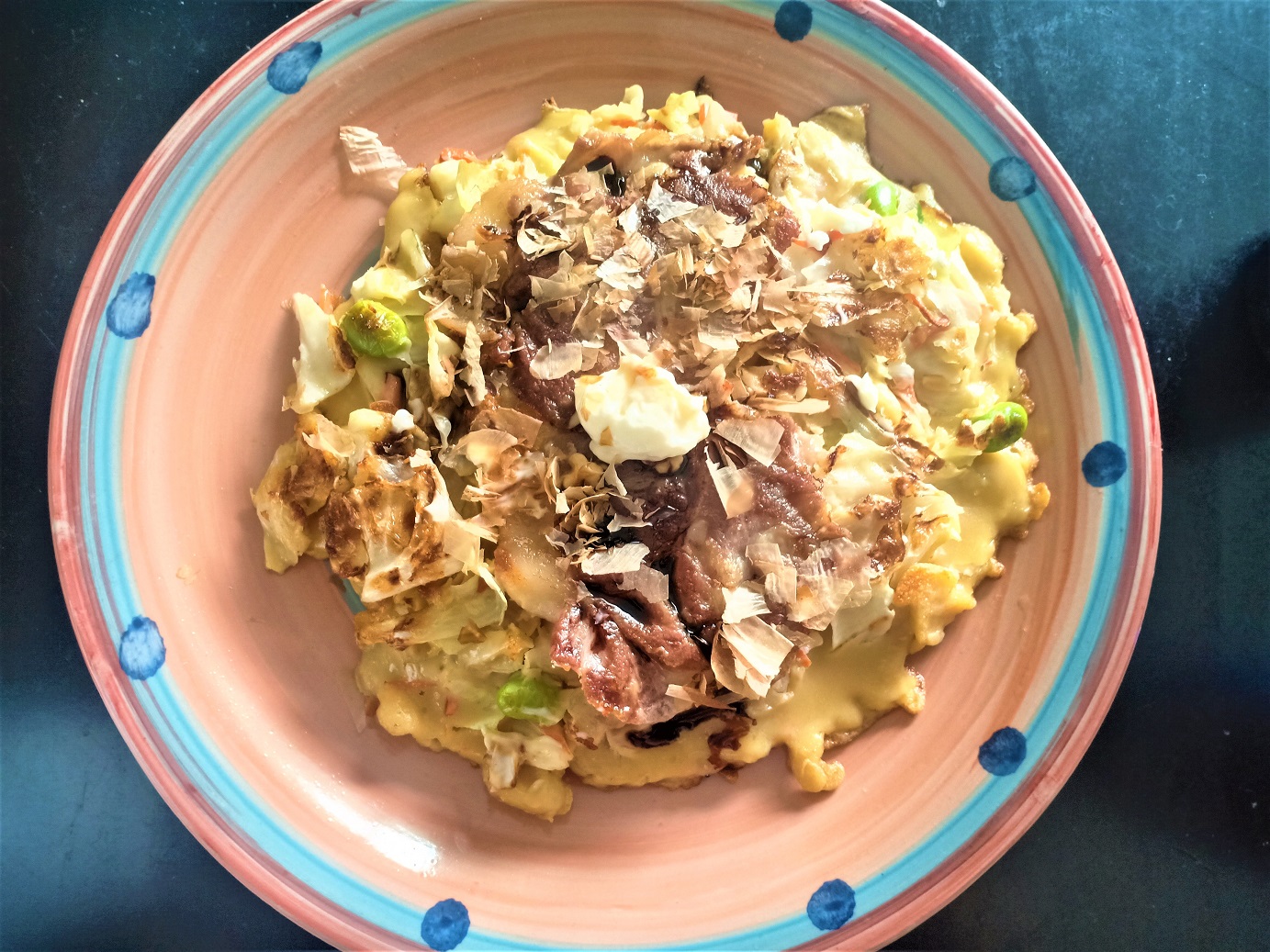Apart from being famous for its Ramen, I honestly didn’t know much about Kyushu before setting out on this trip. Who would have thought its volcanic landscape, lush greenery which really reminded me of the Swiss countryside and its breathtaking ravines make a lasting impression on me in which I had a renewed appreciation for Nature’s beauty. Below are some of the highlights of my Kyushu trip (non exhaustive by all means).
1. Ramen
Being geographically nearer to China and Korea than any other parts of Japan, Kyushu cuisines find heavy influences from Mainland China and Korea. Although there is no one definitive theory on the origins of Japanese Ramen, but I believe Japanese Ramen originated from Mainland China, after all wheat flour-based noodles are a staple in Mainland China for thousands of years and it is known that there had been a fair amount of exchange or rather cultural import from Mainland China to Japan, and noodles are no exception, I think. Check out the link below for more stories on the social history of the Japanese Ramen:
https://www.tofugu.com/japan/history-of-ramen/
So, when I arrived in Fukuoka I couldn’t wait to try out Hakata Ramen, one of the most well-known versions of Japanese Ramen, known for its thick, creamy and greasy tonkotsu soup base, a result of hours and hours of slow cooking of the pork ribs.
Right after I checked into my hostel, I headed straight for the Canal City shopping mall for a breather after a long and hectic trip on the shinkansen. On the top floor of Canal City, lies the ultimate food heaven + paradise for all Ramen lovers out there – an entire floor filled with restaurants selling all kinds of regional Japanese/Chinese Ramens from Hokkaido Ramen to Nagasaki to Hakata Ramen. Since I was in Fukuoka, it was a no-brainer for me to go with the Hakata Tonkotsu Ramen.
I was simply spoilt by the numerous varieties of Ramen they had on offer on the menu, but I finally settled with the Tonkotsu Ramen with a huge slab of pork cheek (See picture below). And oh boy, the queue going into the restaurant was so long that it took me nearly half an hour to be seated and served. Being hungry, tired and grumpy (because of hunger), my mood immediately brightened up when my huge bowl of Ramen arrived. The huge slab of pork cheek was glistening gloriously with its fatty edges and perfect char-grilled meat. The pork cheek was one of the most tender pieces of meat I’ve ever had other than slow-braised pork belly. It literally just melted in my mouth, the fat to lean meat ratio was just right, it’s not as fatty as pork belly, so it’s not as cloyingly greasy as the pork belly. The broth was slightly too greasy and fatty to me, I know Tonkotsu is supposed to be greasy but it was too overbearing to the point that I could see pork fats solidifying in my broth most probably due to the lukewarm temperature of the broth. Yes, the broth did not come to me piping hot! So yeah that was a huge minus point for me.
In short, if you are interested to try a myriad of ramen from various regions of Japan under one roof and in the comforts of air-conditioning, I totally recommend going to the Ramen stadium in Canal City for its one-of-a-kind Ramen experience!
 |
| The Ramen Stadium in Canal City Shopping Mall in Fukuoka |
 |
| A giant slab of pork cheek on top of your noodles, meat loves’ dream! |
 |
| Various regional Ramen |
 |
| Apparently what I ordered is their number 1 top seller! |
2. The “Hells”
I’m talking about the “Hells” in Beppu, Oita, Japan, home to one of the most famous hot springs in Japan. One couldn’t help but to admire the thick, white steam that is constantly emitting from the ground blanketing the town in mystique. And if you like the smell of sulphur this place is probably your paradise.
I took the earliest bus departing from Fukuoka to Beppu (~3,100yen, ~4 hours) as I only had one day to spend in Beppu. Upon arriving in Beppu, the bus dropped me off at a tourist information centre in Kitahama area where I instantly signed up for a bus tour to see all 7 or 8 hot springs, aka Beppu Jigoku Meguri. The bus tour departs from the Kitahama tourist information 3 times a day (8.40am, 11.45am and 2.45pm). Click on the link below for more information about the “Hell Tour”.http://en.visit-oita.jp/access/beppu.html
Why did I sign up for the bus tour when one could access the hot springs via public transportation? Well, it was rainy that day, and as I arrived in Beppu close to noon, I knew I would be short on time to visit all 8 hot springs, so I chose to go with the tour out of comfort and convenience (take it easy XD).
To be honest, this hot spring tour wasn’t really my thing because it was too touristy. Each hot spring is set in a tiny, miniature garden and the hot springs were fenced up nicely with man-made structure or neatly placed rocks. Heck, they even piled up rocks and built an artificial beam/cover around and over the geyser and built an amphitheatre around the geyser so that audience could sit around while waiting for the geyser to erupt!
Nonetheless, it was still an eye-opening experience to see hot thermal springs exist in many different hues and colours. Even the hot spring water is drinkable and is touted to be healthy to the human body. I tried having a sip and it tasted sulphurous, no surprise there.
If you are expecting to see these interesting and bizarre-looking hot springs in their natural setting, you will be disappointed. Expect crowds, souvenir stores and eateries selling gimmicky snacks like hot spring boiled eggs, buns and vegetables steamed with hot spring steam, to creamy pudding made with hot spring eggs.
 |
| Welcome to the “Hells” |
 |
| Umi Jigoku. And yes, they are cooking eggs in that basket hung from the end of the bamboo stick. |
 |
| Thermal mud, too bad it’s too hot to have a dip in it |
 |
| Steamy affair |
 |
| Steamy… |
 |
| And more steam…. |
 |
| You could even drink hot spring water! |
 |
| Fenced-up hot spring |
 |
| Guardian of the “Hell” |
 |
| Geyser which erupts every 30-40 mins, with its man-made rock walls. |
 |
| Chinoike Jigoku |
3. Mount Aso, Aso
 |
| Breathtaking views of the basin/valley surrounded by five peaks that make up Aso |
 |
| A closer shot at the amazing view |
 |
| Kumamon (mascot of Kumamoto) greets you everywhere you go! |
 |
| The horse ranch at Kusasenri |
 |
| The contrasting barren landscape close to the top of caldera |
 |
| On the way to the helipad |
 |
| Aerial view of the caldera from the helicopter |
 |
| Got to go on a James Bond adventure for a day! |
 |
| Mt. Aso from afar |
4. Takachiho Gorge
To be honest, Takachiho Gorge somewhat fell short of my expectation, perhaps I was fooled by the pictures on the Internet, but I still found myself admiring the intricate and unique patterns on the cliff walls which were so symmetrical that one would have thought they are man-made.
After a short stroll around the Gorge and a steep hike on a trail of endless stairs that brought me to the Takachiho Shrine, I found myself randomly wandering around a quiet local neighbourhood where there were no tourists to be found. My main goal was to see the Gorge but I wasn’t prepared to be taken away by the gorgeous views of the mountains surrounding the deep ravine of Takachiho. I somehow found a small open space in a private parking lot where I had the entire panorama of the mountains and lush greenery all to myself. I was so excited that I took countless selfies and even sang at the top of my lungs!
I now truly understand the feeling of finding happiness, peace and calm in the presence of nature. I am constantly awe-struck and revered by the grandeur and sheer beauty of Mother Nature.
So a piece of advice from me, whenever you feel sad or down or stressed from study or work, go out there, soak in the sun, take a stroll in the park, enjoy the soft breeze on your face, I guarantee you will feel so much better.
 |
| Kodono Street – the path leading to the Takachiho Shrine |
 |
| The entrance to the Takachiho Shrine |
 |
| A few selections of eateries for tourists to choose from |
 |
| Takachiho Specialty – Somen (silky smooth thin wheat noodles), grilled salted river fish and bamboo shoots. |
 |
| The gorge from above. |
 |
| Near vertical cliff walls, sheer drop to the river. |
 |
| The most well-known shot of Takachiho Gorge. |
 |
| Nature’s artwork in the form of eroded cliff face. |
 |
| I randomly walked into a quiet neighbourhood near the entrance to Takachiho Gorge where there were ZERO tourists |
 |
| I found this unbelievably gorgeous view of the surrounding mountains |
 |
| Nature in action! Busy bees at work |
 |
| An unexpected sun set to end my awesome day |



















So in detail! haha Thanks for sharing